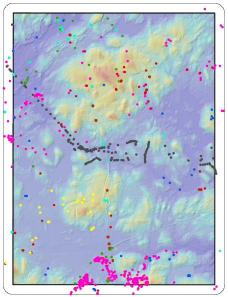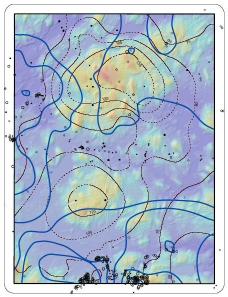Our staff has a particular depth in the application of GIS and visualization
technologies to the geosciences, from technical modeling and analysis of
sub-surface structure and groundwater to global climate analysis. We have
the knowledge, experience, and familiarity to help you with a wide range of
environmental, geotechnical, and climate-related problems.
Geoscience: Well AnalysisIn most parts of the country, certain basic information is recorded for every well drilled, whether for water, construction, testing, or other purposes. Most logs include the depth to bedrock if it was reached (which can also be thought of as the thickness of the overburden or sediment, till, fill, etc), the depth to the water table. Water well logs also typically record some measure of the flow rate or water yield. This information can be quite valuable for understanding the subsurface geology and hydrology, for knowing what to expect in future drilling or construction projects, and for guiding siting decisions involving natural resources, groundwater protection, or environmental impact.These maps show some results of a pilot study in Massachusetts in which well data from 8 different sources were compiled, standardized, quality-checked, and analysed to predict the bedrock surface, the groundwater surface, and the well yield variations across a single USGS quad. The first map identifies the location and source of all the wells; the second map shows those wells with water level information, as well as predicted contours of depth to water and water surface elevation. The shaded-relief base map in both cases shows the surface topography. |


